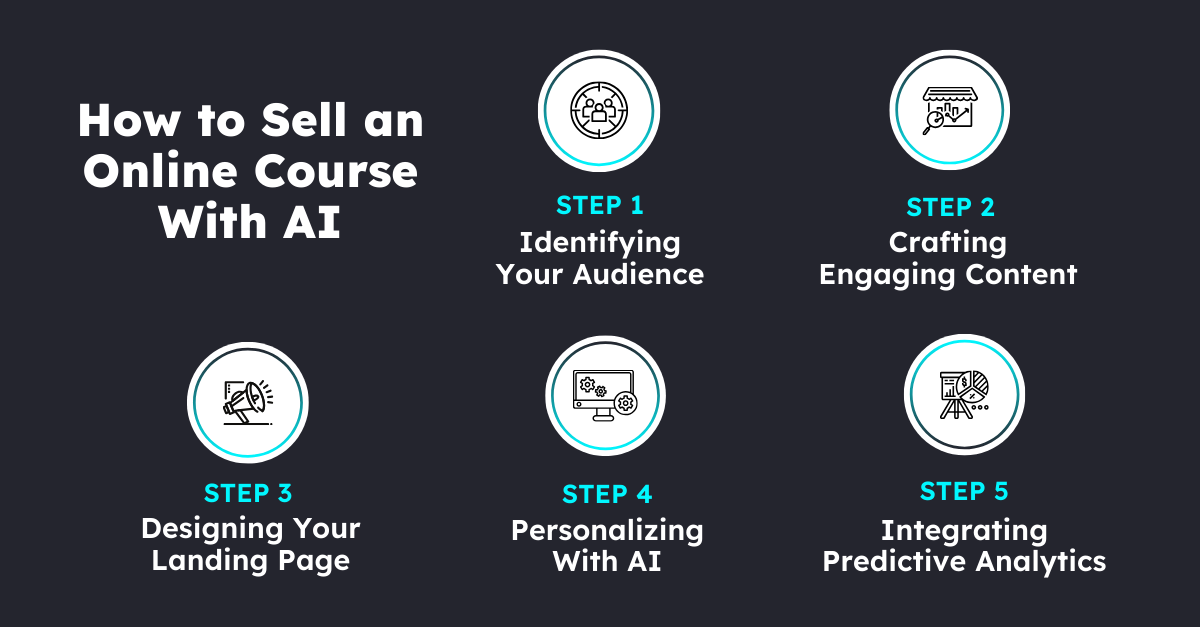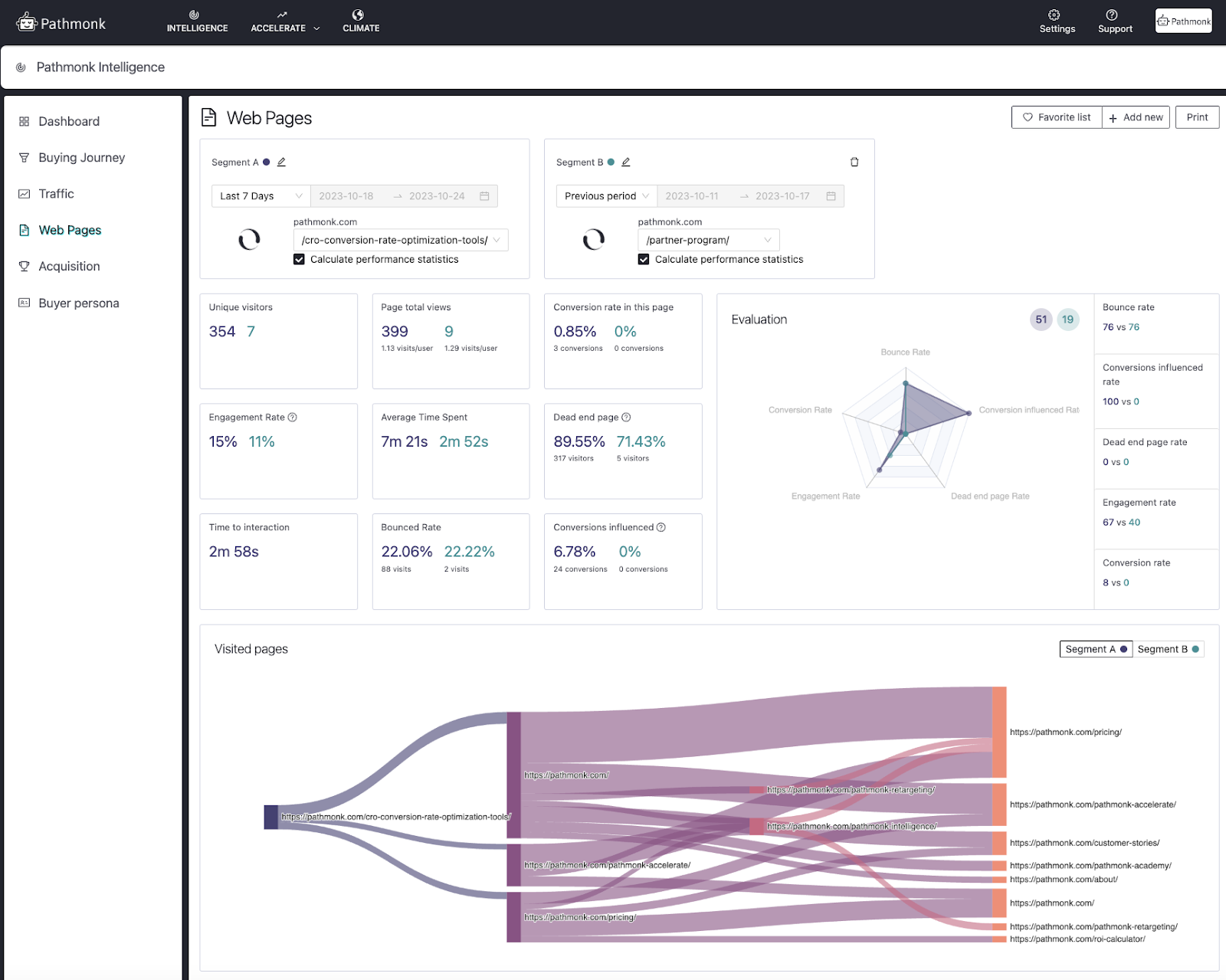
Table of Contents
The convenience and accessibility of online learning have revolutionized how knowledge is disseminated, making it possible for anyone, anywhere, to learn anything at any time. However, for the creators of these courses, the digital sea is also a fiercely competitive arena. The challenge lies not just in creating valuable and informative content but in effectively marketing it to stand out in a crowded market. This is where the strategic design of a course landing page comes into play, serving as a critical bridge connecting potential learners with the courses that can enrich their lives and careers. But why have online courses become such a crucial part of modern education, and how can a well-crafted landing page turn the tide in favor of course creators? Let’s dive into the depths of online learning and uncover the strategies that can make your course a beacon of success.
Why Online Courses?
The rise of online courses can be attributed to their unparalleled flexibility and accessibility. They break down geographical barriers, enabling learners from any corner of the globe to access premium educational content at their convenience. This democratization of education has opened up learning opportunities that were previously unimaginable.
Creating online courses as a marketing strategy can be a highly effective approach for businesses for several reasons:
- Brand Authority and Expertise: By offering courses related to their industry, businesses can establish themselves as authorities in their field. This helps in building trust with potential customers, who are more likely to turn to a company that demonstrates expertise.
- Value Addition: Online courses provide tangible value to potential and existing customers. By offering valuable knowledge for free or at a reasonable price, businesses can attract leads who are interested in their products or services, fostering a relationship that is based on the provision of value rather than just selling.
- Customer Engagement and Retention: Courses encourage ongoing engagement with the brand. As users progress through a course, they have more touchpoints with the company, increasing brand recall and loyalty. This repeated engagement can lead to higher customer retention rates.
- Lead Generation: Online courses are an effective tool for capturing leads. By requiring users to sign up to access the courses, businesses can collect valuable contact information and consent to follow up, which can then be used for future marketing efforts.
- Content Marketing: Courses are a form of content marketing that can attract new audiences. They can be optimized for search engines, shared on social media, and promoted through various channels to reach a wider audience.
- Differentiation: Offering courses can differentiate a business from its competitors. In markets where products and services are similar, providing additional educational content can be a unique selling proposition.
- Monetization Opportunity: While many businesses use courses as a lead generation tool, they can also be a direct source of revenue. Specialized, high-quality courses can be sold, creating an additional income stream.
- Feedback Loop: Through quizzes, discussions, and course engagement metrics, businesses can gain insights into their customers’ interests and challenges. This feedback can inform product development, marketing strategies, and customer service improvements.
Moreover, online courses cater to a wide spectrum of learning styles. They combine videos, text, interactive quizzes, and forums to create a rich, engaging learning environment that can be tailored to individual needs. This personalized approach to learning ensures that students can learn at their own pace, revisiting complex topics as needed, which is often not possible in traditional educational settings.
For experts and brands, online courses offer an avenue to share their knowledge with a global audience, establishing their authority in their field while also generating income. The scalability of online courses means that once created, a course can be sold to an unlimited number of students with minimal additional cost, making it a highly lucrative and efficient method of education delivery.
Understanding the Impact of Landing Pages on Course Sales
A landing page is much more than a digital brochure; it’s the gateway to your online course. Its primary goal is to convert visitors into students by clearly communicating the value of your course and encouraging immediate action. Here’s how a well-designed landing page can make a significant difference in your course sales:
Clarity and Focus
The best landing pages are those that communicate the core message of your course succinctly. They focus on the benefits that students will gain by enrolling, such as acquiring a new skill, advancing their career, or pursuing a passion. By highlighting these outcomes, you can create a compelling value proposition that resonates with your target audience.
Building Trust
Trust is a crucial component in the decision-making process. Testimonials from past students, instructor bios, and case studies showcasing the success of your course material can significantly enhance credibility. A landing page that incorporates these elements effectively builds confidence among prospective students, making them more likely to enroll.
Simplifying the Enrollment Process
The ultimate aim of your landing page is to guide visitors towards enrollment. A clear, straightforward call-to-action button is vital. Whether it’s “Enroll Now,” “Start Learning,” or “Join the Class,” your CTA should stand out and make the enrollment process as simple and frictionless as possible.
Optimization and Testing
A landing page is not a set-and-forget tool. Continuous testing and optimization are essential to understand what resonates with your audience. A/B testing different elements of your landing page, such as headlines, images, and CTAs, can provide insights into what drives conversions and allows you to refine your approach for maximum impact.
So now that you know you need courses and a kick-ass landing page to market them, let’s see how to do it most efficiently and cost-effectively. Don’t worry, just follow the steps below, and you’ll be selling your courses like hotcakes in no time.

Step 1: Identifying Your Course’s Target Audience
The success of any online course begins with a clear understanding of its target audience. Knowing who your course is for helps tailor your content, marketing strategies, and, importantly, your landing page to speak directly to the needs and desires of your potential students. Here’s how to identify your course’s target audience:
Assess Your Course Content
Start by closely examining the content of your course. What specific problems does it solve? Which skills does it teach? Understanding the core of your course allows you to envision the type of individuals who would benefit most from it.
Analyze Market Demand
Researching existing courses in your niche can provide insights into who is enrolling in similar courses and what gaps your course could fill. Online forums, social media groups, and course review sections are excellent resources for understanding the interests and challenges of potential learners.
Define Demographics and Psychographics
Demographics include age, location, education level, and job title, which help in painting a picture of your ideal student. Psychographics go deeper, exploring interests, aspirations, and lifestyles. Combining both gives a holistic view of who your audience is and what motivates them.
Step 2: Crafting Engaging Content for Your Course’s Landing Page
Creating content that not only draws in your audience but also encourages them to enroll requires a deep understanding of what motivates them. Your landing page is the showcase of your course, and every element, from the headline to the call-to-action, needs to be meticulously crafted. Here’s how to create content that captivates and converts:
Understand the Power of Persuasive Copywriting
The text on your landing page should be compelling and persuasive. It’s not just about informing your audience; it’s about convincing them that your course can fulfill their needs or desires. Use powerful, action-oriented language that speaks directly to the outcomes they can expect from taking your course.
Leverage AI for Content Optimization
AI tools like Copy.ai, Jasper, and Grammarly can be instrumental in refining your landing page content. These tools can help generate creative copy, suggest improvements, and ensure your content is clear, engaging, and error-free. For example, AI can help you experiment with different headlines to see which ones are more likely to capture attention or suggest ways to make your descriptions more persuasive.
Visual Content That Tells a Story
Humans are visual creatures, and the right images, videos, or infographics can significantly enhance the appeal of your landing page. Use visual content that complements your written text and helps to tell the story of your course. Visuals should reflect the quality and nature of your course, making it easier for potential students to imagine what taking the course will be like.
Use AI to Understand and Segment Your Audience
AI tools like HubSpot and Salesforce offer advanced analytics and customer relationship management capabilities, allowing you to segment your audience and tailor your landing page content to different groups. This level of personalization can significantly increase engagement and conversion rates by ensuring that the message resonates with each visitor’s specific interests and needs.
Continuing with the guide on how to sell a course online through a landing page, the next critical step after identifying your target audience and crafting engaging content is designing the landing page itself. A well-designed landing page can make the difference between a prospective student scrolling past or taking the decisive action to enroll.
Step 3: Designing Your Course Landing Page
The design of your course landing page plays a pivotal role in converting visitors into students. A responsive, intuitive, and aesthetically pleasing landing page not only reflects the quality of your course but also enhances user experience, making it easier for prospective students to navigate and take action.
Building a Responsive Landing Page to Sell Your Online Course
In today’s digital age, your audience will access your landing page from a variety of devices, including desktops, tablets, and smartphones. A responsive design ensures that your landing page looks great and functions flawlessly across all devices, providing a seamless experience for every visitor.
Focus on Simplicity and Clarity
Your landing page design should prioritize simplicity and clarity. Avoid clutter and unnecessary information that can distract from the main message and call to action. Use clean lines, ample white space, and a coherent structure to guide visitors through your page, from introduction to enrollment.
Use Visual Hierarchy to Guide Visitors
Visual hierarchy involves arranging and designing elements in a way that naturally guides the viewer’s attention to the most important information first. Use size, color, and placement to highlight key components like course benefits, testimonials, and the enrollment button. This not only makes your page more visually appealing but also more effective in conveying your message.
Choose the Right Color Scheme and Imagery
Colors and images are powerful tools in setting the tone of your landing page and evoking emotions. Choose a color scheme that aligns with your brand and resonates with your target audience. Similarly, select imagery that reflects the essence of your course and connects on an emotional level with prospective students. High-quality, relevant images can significantly increase engagement and interest.
Test and Refine
Designing your landing page is not a one-time task but an ongoing process of testing and refinement. Use feedback from users and conversion data to continually tweak and improve your landing page design. Simple changes, like adjusting the CTA placement or altering the color scheme, can have significant impacts on conversion rates.
Step 4: Personalizing the Landing Page Experience to Boost Course Sales with AI
In the journey of selling an online course, creating a landing page that speaks directly to each visitor can significantly enhance your conversion rates. Personalizing the landing page experience ensures that every potential student feels understood and valued, directly addressing their unique needs and motivations. Here’s how to achieve that level of personalization:
A personalized landing page experience can significantly boost course sales by making each visitor feel uniquely understood and valued. This is where Pathmonk Accelerate comes into play, offering a dynamic tool powered by AI to revolutionize how you personalize your course landing page.
Leveraging Pathmonk Accelerate for Customized User Journeys
Pathmonk Accelerate is designed to enhance the personalization of your landing page, using intelligent insights to create a more engaging and tailored experience for every visitor. Here’s how you can use it to take your landing page from generic to genuinely personalized:
Real-time Personalization
Pathmonk Accelerate analyzes visitor behavior in real-time, allowing you to adapt the content, messaging, and calls to action on your landing page to match the interests and needs of each user. Whether it’s showcasing specific course benefits that align with their browsing behavior or highlighting testimonials that resonate with their particular challenges, Accelerate ensures your landing page speaks directly to the visitor’s desires and concerns.
Increase +180%
leads
demos
sales
bookings
from your website with AI
Get more conversions from your existing website traffic delivering personalized experiences.

A/B Testing for Continuous Improvement
Personalization is an ongoing process, and Pathmonk Accelerate supports this by facilitating A/B testing of different landing page elements. Test various personalization strategies to see what works best for different segments of your audience, ensuring your landing page remains effective and engaging over time.
The ultimate goal of personalizing your course landing page with Pathmonk Accelerate is to create a connection with every visitor that goes beyond the surface level. By tailoring the landing page experience to meet the specific needs and interests of each user, you not only increase the likelihood of converting visitors into students but also build a foundation of trust and value that can lead to long-term relationships.
Step 5: Integrate Pathmonk Intelligence for Insightful Analytics on Your Course Landing Page
After designing a responsive and personalized landing page, the next crucial step is to monitor its performance and make continuous enhancements. This ongoing process ensures that your landing page remains optimized for conversions and aligned with your audience’s evolving needs. A powerful tool for this purpose is Pathmonk Intelligence, which offers deep insights and analytics specifically tailored for landing pages.
Understand your customer journey analytics
See how your users behave, find drop-offs, and receive actionable insights with AI.

By integrating Pathmonk Intelligence, you can gain a deeper understanding of user behavior, identify areas for improvement, and implement strategies to enhance the performance of your course landing page. Here’s how this tool can help you transform your landing page’s effectiveness:
Understand Visitor Behavior
Pathmonk Intelligence goes beyond traditional analytics by offering detailed insights into the visitor journey on your landing page. It tracks every click, scroll, and interaction, allowing you to see exactly where visitors are engaging most and where they may be dropping off. This level of detail helps identify specific elements of your landing page that capture attention and those that may need to be optimized for better engagement.
Conversion Optimization Insights
One of the key features of Pathmonk Intelligence is its ability to provide targeted recommendations for increasing conversion rates. By analyzing the behavior of visitors who convert versus those who don’t, it can suggest specific changes to your landing page that are likely to enhance its overall effectiveness. This could include adjustments to the layout, content, or calls to action, all aimed at boosting conversions.
Real-time Feedback
Pathmonk Intelligence offers real-time analytics, giving you immediate feedback on the impact of any changes you make to your landing page. This enables a rapid testing and optimization cycle, allowing you to quickly iterate on your page design and content to find the most effective combinations for engaging and converting visitors.

Seamless Integration
Integrating Pathmonk Intelligence with your landing page is straightforward, with minimal impact on page load times or user experience. This ease of integration means you can start gathering and acting on insights quickly, without the need for extensive technical adjustments or overhauls of your existing landing page design.
Conclusions
Navigating the digital realm to sell an online course requires more than just content creation; it demands a multifaceted approach that combines understanding your audience, crafting engaging content, designing a responsive and personalized landing page, and continuously monitoring and enhancing its performance.
By identifying your target audience, you lay the foundation for a course that resonates with potential learners. Crafting engaging content and designing a user-friendly landing page ensures that visitors are not just attracted to your course but are also compelled to enroll.
Personalizing the landing experience deepens this connection, making each visitor feel valued and understood. Finally, integrating tools like Pathmonk Intelligence to gather insights and optimize your landing page ensures that your course remains relevant, engaging, and successful in the ever-evolving landscape of online education. In the end, selling an online course is not just about transactions; it’s about creating meaningful learning experiences that leave a lasting impact on your students and establish your course as a cornerstone of their educational journey.





